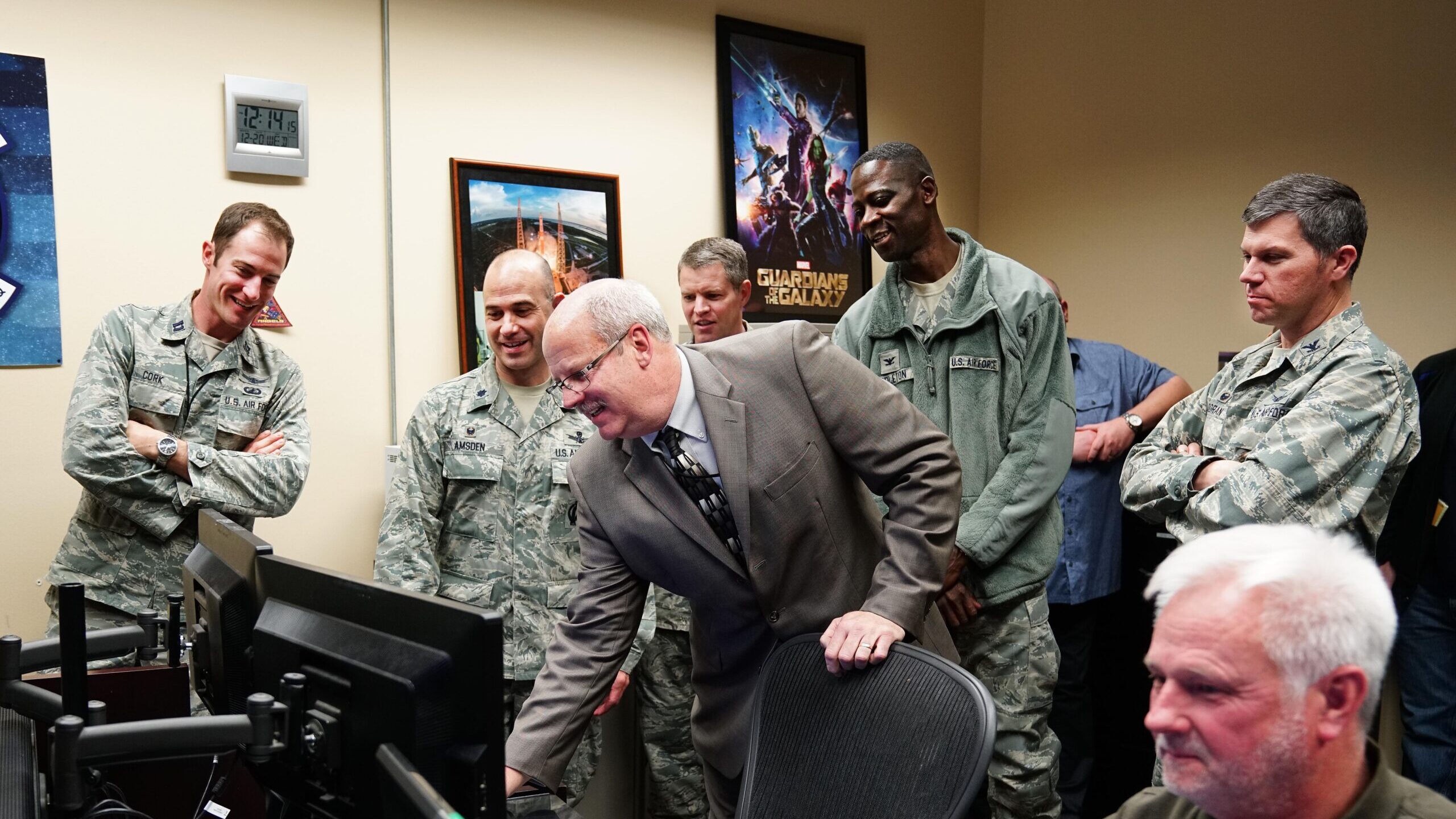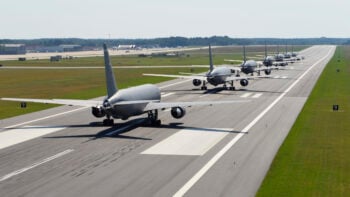
Joel Mozer (center), Space Force director of science, technology, and research. (Air Force photo by Dennis Rogers)
WASHINGTON: Space Force science and technology efforts are concentrating on autonomous systems to help the service in its effort to overhaul military space systems to better withstand adversary attack, according to the service’s top scientist.
“We have to build resilience in our systems. Had we thought about this 15 years ago, it would be simple — we would have that resilience built in. But now we’re having to redesign our architectures figure out how to do it. And so that’s where the rub lies and where the challenges are,” Joel Mozer, Space Force director of science, technology and research told the America’s Future Space Innovation Summit on Tuesday.
“Autonomy and automation, human-machine interfaces, trust in our autonomy. All of these are areas that we’re really concentrating on today to really shore up and be able to do the operations,” he said.
It is not only the fact that satellite systems have to operate in the vast volumes of space out of the reach of human engineers that require improved and more reliable autonomous capabilities, but also the fact that the Space Force is small people-power wise, Mazer explained.
“We’re just a few percent of the size of the Air Force, and a very small percentage of the size of the Army. So we have to learn how to do things in the most technologically complex domain: space — at its most vast space is infinite — with a very small number of people,” he said.
The small size of the service is one of the driving forces behind the push by Chief of Space Operations Gen. Jay Raymond to maximize the use of digital tools as a foundational maxim.
Mozer said that one of the biggest challenges for the Space Force is staying on top of the technology curve.
“Part of it is, is really, the rate of change of technology and trying to keep up with that. So, the ability to the great ideas that are coming not only from our own research labs, but from commercial industry and civil space, and figure out how to put those into an architecture that we can live with and extend into the future is a big challenge and that plays out all over the place,” he said.
As an example, Mozer noted that the dramatic reduction in the cost of launch has led to an explosion of very large satellite constellations in Low Earth Orbit (LEO), that cost much less than the much smaller traditional military satellite systems in higher orbits. These distributed systems, which are inherently more resilient, are “a good thing,” he said, but are “driving new architectures” that will not be easy to implement.
“In my position, I see just fantastic, eye-watering new ideas, innovative ideas from commercial entities almost every day. And we would love to be able to to implement those. But if it requires a complete … change in the way of doing business, that’s a significant thing that we must consider,” he said. “If it doesn’t fit in our architecture, sometimes we have to say no to some of these technologies.”
Even if the concept and tech are a fit and will provide a return on investment, innovative leaps require the service to “figure out how to redesign everything and to do things … to have the operators, to have the resources to make it happen,” he added.
“So, a lot of the technology challenges that we face are really kind of fundamental and architectural in that way — trying to get these new, rapidly evolving ideas into the system in a way that makes sense and it’s not utter chaos,” Mozer said.
And convincing a risk averse acquisition culture within the military space community and the Pentagon to take on such major muscle movements that come with inherent risks, especially budgetary risks, isn’t easy, he explained. One way to change that thinking is rather than concentrate on what the risks are of taking new action, but to reverse the thought process and look at “the risk of not doing something” new that could change the calculus for adversaries, he said.
Noting the large investments China is making in space — for example, he pointed to Beijing’s current focus on exploration and operations in the cislunar region around the Moon — Mozer said the more important question is: “What’s the risk of not investing in science and technology if our strategic competitors are aggressively investing in these areas?”
In a Taiwan conflict, tough choices could come for Big Tech
Washington could do more to incentivize tech companies to distance themselves from China, but CEOs should examine how they’d react to a fight in the Pacific, CSET’s Sam Bresnick and Emelia Probasco argue.



























